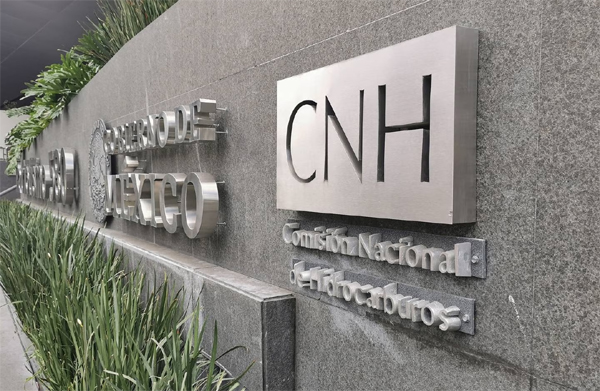- Last June, Mexico’s oil regulator unanimously rejected a plan presented by state energy company Pemex to develop its biggest discovery in three decades, arguing the proposal was both economically and technically unsound.

Stefanie Eschenbacher, Reuters
MEXICO CITY
EnergiesNet.com 05 01 2023
Last June, Mexico’s oil regulator unanimously rejected a plan presented by state energy company Pemex to develop its biggest discovery in three decades, arguing the proposal was both economically and technically unsound.
Five months later, on Nov. 24, the regulator approved the plan for the Quesqui field in the southern state of Tabasco.
In the intervening period, the government of President Andres Manuel Lopez Obrador replaced the head of the National Hydrocarbons Commission (CNH), Rogelio Hernandez, with a former Pemex (PEMX.UL) official, Agustin Diaz Lastra.
Interviews with eight sources with direct knowledge of the matter show Hernandez had been pressured by Lopez Obrador’s government and Pemex to approve Quesqui and other plans, or resign.
Reuters also reviewed six public and four internal documents related to the plans to understand how they were approved and what the concerns were.
The individuals interviewed for this story spoke to Reuters on the condition of anonymity because they were not authorized to speak publicly about an issue the government had declared a matter of national security.
According to these people, at least three other senior officials at the regulator were also pressured by officials in government and at the regulator to help approve the plans.
Several audio files – recorded after Hernandez left – confirm this. Reuters was allowed to listen to the files on condition that details that could identify the source would not be revealed.
Pemex, the energy ministry and the government did not respond to repeated requests for comment.
One of the officials who the sources said was pressured, the former technical head, Julio Trejo, resigned shortly before the Quesqui plan was approved.
Three out of four voting senior officials at the regulator voted in favor of greenlighting Pemex’s plan in November, including the new head of the regulator.
Hector Moreira, one of the four, responded to Reuters with a brief statement issued through the regulator saying the plan for Quesqui was found viable the second time and was supported by studies – without explaining which elements had changed. The regulator declined to comment further.
In public and internal documents related to the plans and Pemex’s management of Quesqui, the former head of the regulator, Hernandez, and former technical head, Trejo, had strongly opposed the development plan for the field, arguing it was not sufficiently tried and tested, and too expensive.
In August, Hernandez resigned under pressure from government officials, the eight sources said. He was replaced in October by Diaz Lastra, one of three candidates presented by Lopez Obrador for a vote by the Senate, which his party controls.
One source at the energy ministry, who attended meetings where disagreements between Pemex and the regulator over several key fields were discussed, said Hernandez and Trejo were considered “obstacles” by Pemex in plans to boost production.
In November, Trejo also quit the regulator and was replaced – a week before the second vote on Nov. 24 – by Rafael Guerrero, whose previous job was Pemex’s legal representative responsible for dealing with the regulator.
In one previously unreported document dated July 29, Guerrero stressed the importance of Quesqui for production and urged the regulator to approve the plan.
On Pemex letterhead, he wrote that federal and other entities like the regulator “are instructed to carry out the actions, as indicated by the Mexican government, for projects and works that are of public interest and national security.”
Guerrero also reiterated that the Quesqui field “is a strategic project” as defined by the government.
In mid-November, Guerrero was appointed by Diaz Lastra and put in charge of the technical unit for extraction and supervision – a key role in which he made a recommendation to the four officials who voted on the plan.
Around a week later the plan was approved with the votes of three of the four senior officials – the new president, Diaz Lastra, as well as Moreira and Nestor Martinez, both of whom had previously rejected the plan.
Guerrero had advised them to vote in favor, according to a public document in which the technical head issues his recommendation for senior officials with voting rights.
Neither Guerrero nor Diaz Lastra responded to repeated requests for comment.
Moreira’s April 13 statement to Reuters, issued by the regulator, said the panel had “found the plan technically, economically and legally viable supported by studies” Pemex presented. Martinez declined to comment for this article.
Alma America Porres, who stuck with her vote against, left the regulator in January at the previously scheduled end of her term.
PLANS UNCHANGED
More than a dozen energy experts told Reuters the changes at the regulator weaken one of the last remaining independent bodies with oversight of Pemex, a massive near-monopoly that is also the top contributor to state coffers.
Reuters did not have access to the plans for Quesqui, which are protected in Mexico as state secrets.
But five of the sources – who have seen both versions of the plan – said the iteration approved in November was almost identical to the one that had been rejected in June.
There were only minor changes, such as adjustments for inflation and to make up for lapsed time after the plan was stalled, they said.
In rejecting the plan in June, the regulator cited issues such as a lack of comprehensive studies and trials for a strategy that sees Pemex inject water into the field, three public and two internal documents reviewed by Reuters show.
In one internal document dated Aug. 5, the regulator argued that the plan to inject water into Quesqui was “poorly analyzed”, “without basis” and risked “irreparable damage” to the country’s most valuable field.
Those issues were not addressed in the later version, the five sources told Reuters.
In both, the overall budget was just over $3 billion.
Lopez Obrador has been pushing Pemex to reverse a nearly-two-decade production decline. Quesqui, with Mexico’s largest gas reserves and third-largest condensate reserves, is a vital part of that strategy.
The sources told Reuters that proceeding with the plan could indeed boost short-term production but all agreed with the regulator’s initial assessment in June that it would almost certainly reduce the overall amount that can be produced.
It would likely damage the field, the sources said, because injecting water into the field was not a strategy compatible with the geological formation of Quesqui.
Reporting by Stefanie Eschenbacher Editing by Stephen Eisenhammer and Claudia Parsons
reuters.com 04 28 2023












